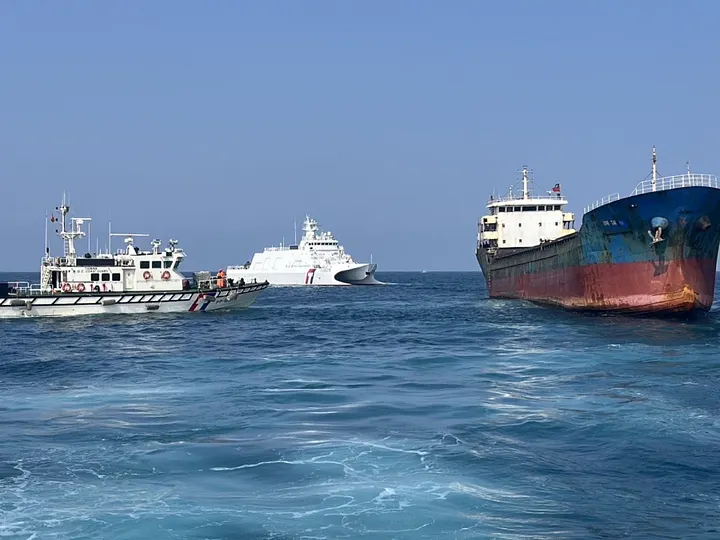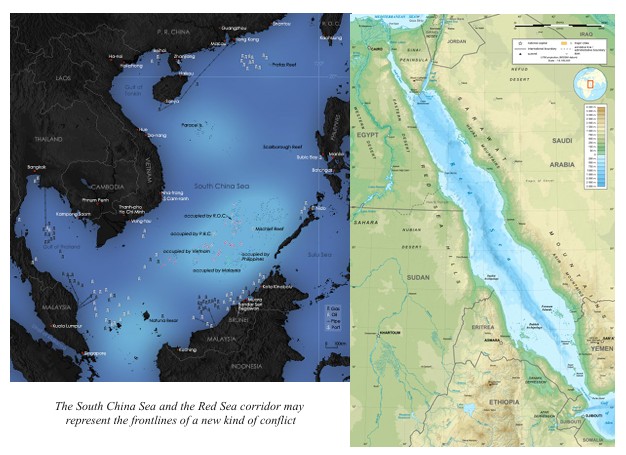The silent warfront: from barrels to bytes
The silent warfront: from barrels to bytes
Tanya Vatsa examines how the crucial communication cables that keep us all connected are increasingly becoming potent instruments of disruption that could reshape the global order
In today’s hyperconnected world, the arteries of global communication run silently beneath our oceans. Submarine cables – responsible for carrying 95% of international data traffic – have emerged as critical yet vulnerable infrastructure in a world increasingly defined by digital interdependence.
Although hidden from view, these lifelines are no longer just technical marvels; they are contested spaces in the shadow wars of geopolitics. Recent disruptions in both the South China Sea and the Red Sea underscore how undersea cables are fast becoming strategic chokepoints in politically fragile and economically indispensable maritime corridors.
Few regions illustrate this vulnerability more starkly than Taiwan. For years, the island has endured repeated disruptions to its submarine cables – incidents many analysts view as deliberate acts of gray-zone warfare.
In January 2025, Taiwanese authorities detained the Hongtai, a Togolese-flagged vessel operated by a Chinese crew, after it was implicated in severing a key undersea link between Taiwan and the Penghu archipelago. The episode was the latest in a string of suspicious incidents, following the 2023 severing of cables to the Matsu Islands that left communities digitally isolated for weeks. Businesses suffered millions in losses, while emergency services scrambled to maintain basic communications. The pattern suggests calculated provocations – strategic yet deniable actions designed to test Taiwan’s resilience without triggering open conflict.

The Red Sea, a vital artery for both trade and digital traffic between Asia, Europe, and Africa, has likewise become a flashpoint. In February 2024, a Houthi attack on a commercial vessel inadvertently damaged four cables, disrupting nearly a quarter of regional data traffic. The incident triggered latency spikes, slowed banking operations, and caused widespread connectivity failures across continents, leading to direct repair costs of $50 million and indirect losses worth millions.
More recently, in September 2025, multiple undersea cables were cut again in the Red Sea, plunging parts of South Asia and the Middle East – including India, Pakistan, the Gulf states, and beyond – into severe outages. The disruptions paralysed e-commerce, slowed financial
Digital lifelines are also economic chokeholds
transactions, and impaired critical Cloud services. Early investigations suggest possible accidental damage from shipping activity, but the coincidence of simultaneous cuts in such a geopolitically sensitive corridor has fuelled speculation of deliberate targeting. For economies where nearly 80% of westward data traffic flows through this narrow waterway, the incident has been a stark reminder that digital lifelines are also economic chokeholds.
The emerging pattern is not limited to the Indo-Pacific. In November 2024, Europe faced its own disruption when cables between Finland and Germany were damaged under suspicious circumstances.Erratic movements of a Chinese-registered vessel, the Yi Peng 3, whose anchor may or may not have been dragged along the seabed, damaging the cable. The damage could have been accidental, but suspicions of intentional sabotage have not been ruled out.
Severing cables can cripple financial markets, disrupt high-frequency trading and compromise military communications
These cables have become potent instruments of disruption given their paradoxical nature: they are essential to modern economies yet extraordinarily difficult to defend. Severing them can cripple financial markets, disrupt high-frequency trading, and compromise military communications – all without a single shot being fired. Attribution is notoriously difficult, offering adversaries plausible deniability while inflicting outsized economic and political damage.
Incidents in economically vulnerable waterways indicate that submarine cables are rapidly becoming a warfront in regions already rife with geopolitical volatility. These maritime chokepoints are not only critical to the flow of oil and goods but also to the invisible flow of data – arguably the most valuable commodity of the 21st century. Disruptions here do not just inconvenience users; they shake the foundations of economic stability, financial marketsand national security.

Key to a resolution is recognising the threat. Governments and private stakeholders have initiated methods to respond to the developing challenge. Taiwan has blacklisted Chinese-owned vessels flagged under convenience registries and deployed enhanced surveillance systems near its cables. The US and its allies are investing heavily in diversifying trans-Pacific routes, with projects like Bifrost and Echo prioritising landings in allied territories such as Guam, Indonesia and the Philippines. Europe, too, is enhancing maritime domain awareness in the Baltic and North Seas.
Yet experts caution that redundancy and rerouting can only mitigate, not eliminate, the risks posed by deliberate interference.
The silent war beneath the waves is no longer hypothetical – it is already underway. Each cable cut, whether by accident or design, reverberates through global economies and underscores the fragility of our most critical digital infrastructure.
The South China Sea and the Red Sea corridor may well represent the frontlines of a new kind of conflict, one where control over data flows is as consequential as control over territory or oil. For in an era where power is measured in bytes as much as in barrels, the battle over these invisible lifelines may shape the next great geopolitical re-order.
Tanya Vatsa is currently the Geopolitical and Predictive Intelligence specialist at Inquest Advisories in India, as well as Editor at the Journal of Indo-Pacific Affairs, Dept of Defence, United States of America. She completed her Master’s in Legal Studies at the University of Edinburgh after obtaining a law degree from Lucknow’s National Law University, India

